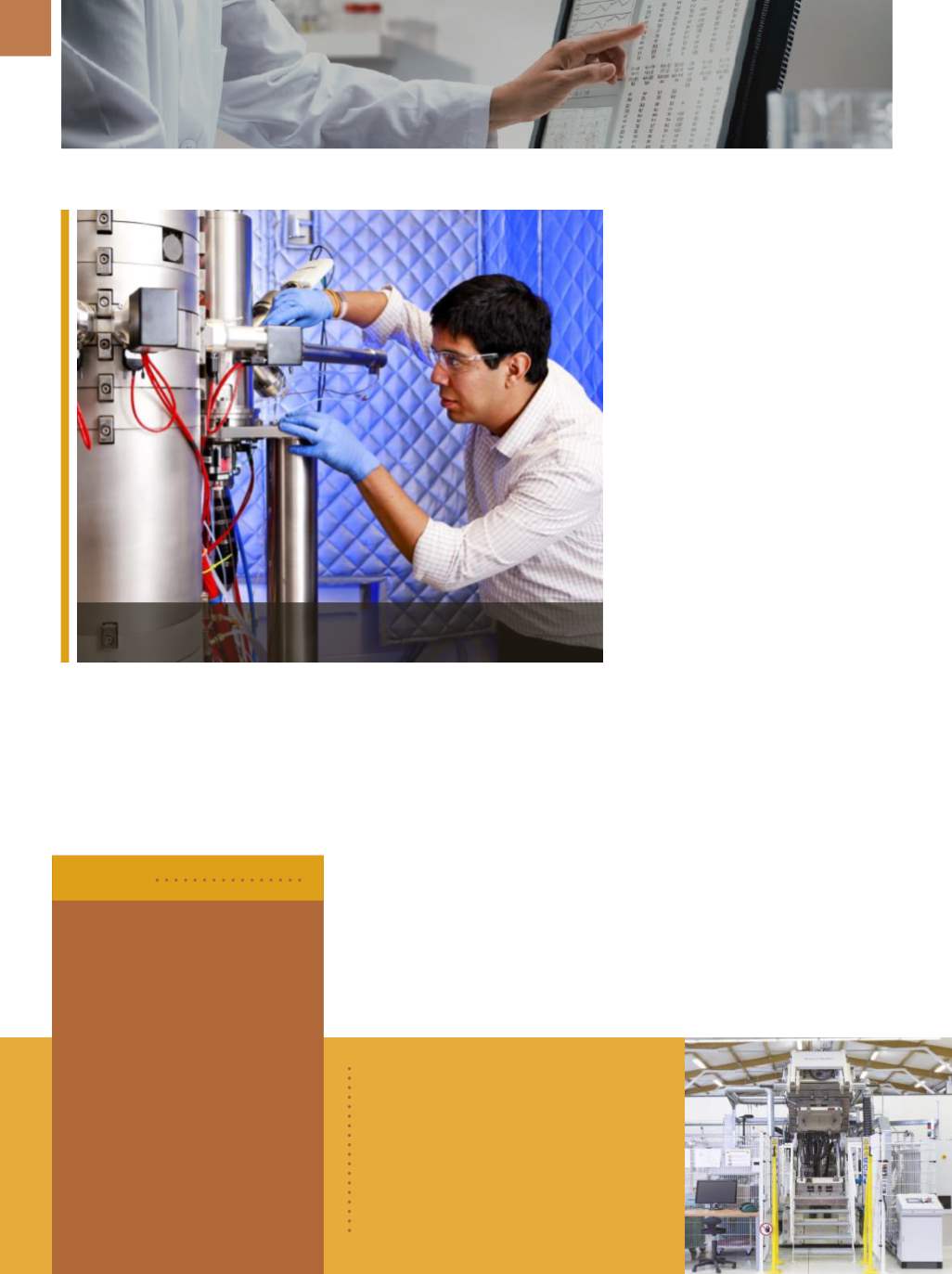

A D V A N C E D M A T E R I A L S & P R O C E S S E S | S E P T E M B E R 2 0 1 6
1 0
small as possible, and if you know how
to control the probe, you can pick up a
magnetic signature.” Idrobo suggests
that the new technique could ulti-
mately lead to smaller magnetic hard
drives. In addition, it can complement
existing methods such as x-ray spec-
troscopy and neutron scattering that
are considered the gold standard in
studying magnetism but are limited
in their spatial resolution.
ornl.gov,
www.uu.se/en.AN EIT CHECKUP FOR
STRUCTURAL HEALTH
Engineers at the University of
Delaware’s Center for Composite
Materials, Newark, developed a new
approach to assess invisible damage
that can occur in structures like bridges
and buildings over time or after cat-
astrophic events. The method uses a
distributed carbon nanotube compos-
ite sensor in conjunction with electri-
cal impedance tomography (EIT). The
relatively inexpensive, mechanically
robust “smart skin” sensor is electri-
cally isotropic and can adhere to virtu-
ally any shape. While carbon nanotube
composites have been used as sensors
before, typically a series of one-dimen-
sional measurements are collected
from a 2D area, confining possible
damage locations to the grid points of
the measurements. With EIT, however,
a true 2D algorithm can be used.
The team evaluated the method-
ology on composite laminate, first with
well-defined damage, then with more
ATOMIC-LEVEL MAGNETISM
COMES INTO FOCUS
ScientistsfromtheDOE’sOakRidge
National Laboratory (ORNL), Tenn., and
Uppsala University, Sweden, developed
a new electron microscopy technique
that detects magnetic behavior at the
The
King Abdullah University of
Science and Technology
(KAUST),
Saudi Arabia, will establish a new
Center of Excellence at the KAUST
Research and Technology Park
on campus. KAUST purchased
electron microscopy equipment
from
FEI,
Hillsboro, Ore., includ-
ing a Titan Themis transmission
electron microscope and a Helios
G4 DualBeam. Later this year, the
new systems will be added to 17
FEI electron microscopes already
installed at the site.
www.kaust.
edu.sa, fei.com.
BRIEFS
Henkel,
Germany, opened a new state-of-
the-art testing facility in Heidelberg. At the
Composite Lab, customers can perform
trials using high-pressure resin transfer
molding equipment, including a 380-ton
press and injection equipment for
polyurethanes and epoxy materials.
composite-lab.com.
Juan Carlos Idrobo helped develop an electronmicroscopy technique to measure
magnetism at the atomic scale.
atomic level. While researchers com-
monly correct distortions that arise in
the electron-optical lens, blurring the
resulting images, this team took advan-
tage of these aberrations, purposely
adding a four-fold astigmatism to col-
lect atomic-level magnetic signals from
a lanthanum-manganese-arsenic oxide
material.
“Magnetism has its origins at the
atomic scale, but the techniques that
we use to measure it usually have spa-
tial resolutions much larger than one
atom,” explains ORNL’s Juan Carlos
Idrobo. “With an electron microscope,
the electron probes can be made as
The new Composite Lab at Henkel.
TESTING | CHARACTERIZATION


















